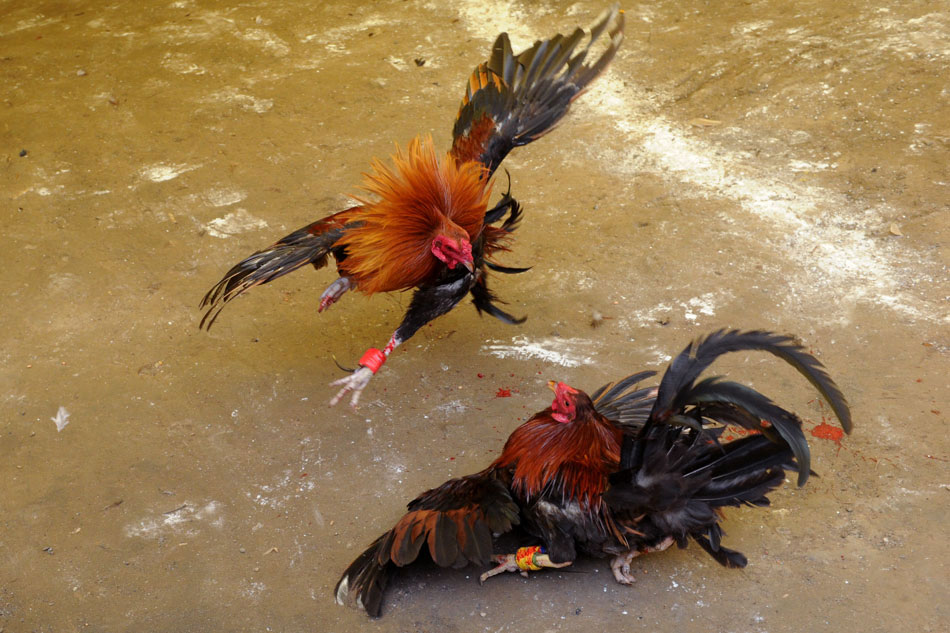The Legacy of a Sabong Grandmaster: Influencing Modern Cockfighting Techniques
The Legacy of a Sabong Grandmaster: Influencing Modern Cockfighting Techniques
Blog Article
Tricks of the Sabong Grandmaster: Understanding the Art of Cockfighting
The complex world of cockfighting, especially as exercised by the Sabong Grandmaster, provides a remarkable study in the assemblage of animal habits, training techniques, and competitive method. To truly comprehend the subtleties of this art form, one need to discover how the Grandmaster balances the psychological and physical elements of fowl training while browsing the ethical considerations intrinsic in this traditional practice. What are the essential understandings that divide the remarkable from the normal in this world? Understanding this might redefine one's viewpoint on the sporting activity and its practitioners.
Background of Cockfighting
As the centuries proceeded, cockfighting spread across various continents, adjusting to local customs and social characteristics. In medieval Europe, it got popularity amongst the nobility, who concerned it as a screen of wide range and condition. By the 17th century, the sport had actually established itself in England, causing the formation of defined rules and laws.
In the Americas, especially in the Caribbean and the Philippines, cockfighting tackled distinct features influenced by colonial backgrounds and aboriginal methods. Today, while the sporting activity remains debatable and encounters legal obstacles in many areas, its historic significance proceeds to trigger discussions regarding pet rights, cultural heritage, and social worths. The evolution of cockfighting shows more comprehensive themes of human interaction with nature and the intricacies of practice.
Understanding Rooster Behavior
Comprehending fowl habits is important for those associated with the sporting activity of cockfighting, as it directly influences training, health and wellness, and efficiency. Fowls show a variety of behaviors that can indicate their physical and mental states. Significantly, aggressiveness, territoriality, and social power structure play substantial duties in their disposition.
Aggression is a natural instinct in roosters, primarily driven by the need to assert dominance. Observing communications amongst fowls can disclose their chain of command, which is vital for handling their atmosphere. A positive rooster displays a much more assertive position, while a submissive one may show indicators of stress and anxiety or anxiety, such as crouching or staying clear of eye call.

Training Strategies for Champions
Effective training strategies are important for developing champion fowls that master the affordable arena of cockfighting. An organized method makes certain that each bird reaches its full potential, incorporating physical conditioning with psychological fortitude.
To begin, establishing a consistent training routine is important - Sabong Grandmaster. This consists of daily exercises that enhance stamina, dexterity, and endurance. Regimens may include regulated sparring sessions with both online and fabricated challengers to simulate competition, permitting fowls to develop their battling abilities in a secure environment
Integrating dexterity drills, such as barrier courses and jumping exercises, substantially boosts a rooster's physical capabilities. Furthermore, presenting diverse surface areas and surfaces can enhance their adaptability during fights.
Mental training must not be forgotten. Acquainting the birds with the audios and views of an affordable environment can reduce tension and stress and anxiety on fight day. Moreover, favorable support methods, such as satisfying preferable actions, can infuse self-confidence in the fowls.
Lastly, maintaining a tranquility and assertive visibility throughout training sessions cultivates depend on between the handler and the rooster, crucial for attaining ideal performance. Together, these techniques create a thorough training routine that grows champions ready to master the sector.
Wellness and Nourishment Fundamentals

Incorporating a mix of corn, barley, and wheat offers needed carbs, while healthy protein sources such as fish meal, soybean meal, or bugs support muscle mass growth and recuperation. Additionally, incorporating fresh vegetables and fruits can improve the general dietary account, using anti-oxidants that enhance the body immune system.
Hydration is just as important. Access to clean, fresh water should be a priority, as dehydration can seriously affect performance (Sabong Grandmaster). Regular health check-ups are important to keep track of for any type of prospective diseases or parasites that click for more could compromise a fowl's problem
Moreover, the timing of feed is important. Supplying nutrients at proper intervals guarantees that roosters keep power levels throughout their training and recuperation phases. By focusing on these health and wellness and nourishment fundamentals, sabong enthusiasts can help their fowls attain optimum performance in the competitive sector.
Methods for Successful Matches
Success in cockfighting depend upon a mix of tactical preparation and in-ring strategies. Efficient match strategies start long before the battle, with cautious selection of the fowl. Dog breeders should focus on genetic traits such as aggressiveness, stamina, and resilience, making certain that the selected bird shows a strong family tree of performance.
Training is critical; roosters need to be conditioned through a routine that includes physical workout, sparring with other birds, and direct exposure to various settings. This preparation not only constructs strength yet also improves the bird's flexibility to different challengers.
Throughout the match, a trainer has to employ eager observation and quick decision-making. Identifying the challenger's strategies enables prompt adjustments, such as moving the fowl's stance or motivating a lot more hostile behavior. Timing is important; recognizing when to limit the bird or urge can mean the difference between success and loss.
Last but not least, keeping a calm behavior throughout suits cultivates self-confidence in the fowl. A well balanced approach, combining both physical and mental preparedness, eventually causes effective results in the field, demonstrating that mastery in cockfighting is as much about strategy as it has to do with the birds themselves.
Conclusion
The mastery of cockfighting, as exhibited by the Sabong Grandmaster, hinges on a comprehensive understanding of fowl habits, efficient training techniques, and optimum health and wellness and nutrition. Inevitably, the tricks of the Sabong Grandmaster lie in the harmonious equilibrium of these elements, ensuring the proceeded legacy of this old sport.
To truly comprehend the nuances of this art kind, one need to explore just how the Grandmaster harmonizes the mental and physical aspects of fowl training while navigating the honest considerations intrinsic in this conventional technique.Understanding fowl behavior is crucial for those included in the sporting activity of cockfighting, as it directly affects training, efficiency, and health and wellness.Preserving optimum health and nourishment is crucial for guaranteeing that fowls reach peak performance in the cockfighting sector. Offering nutrients at appropriate periods ensures that fowls preserve power degrees throughout their training and recovery phases.The proficiency of cockfighting, as exhibited by the Sabong Grandmaster, get more hinges on an extensive understanding of fowl actions, effective training methods, and ideal wellness and nutrition.
Report this page